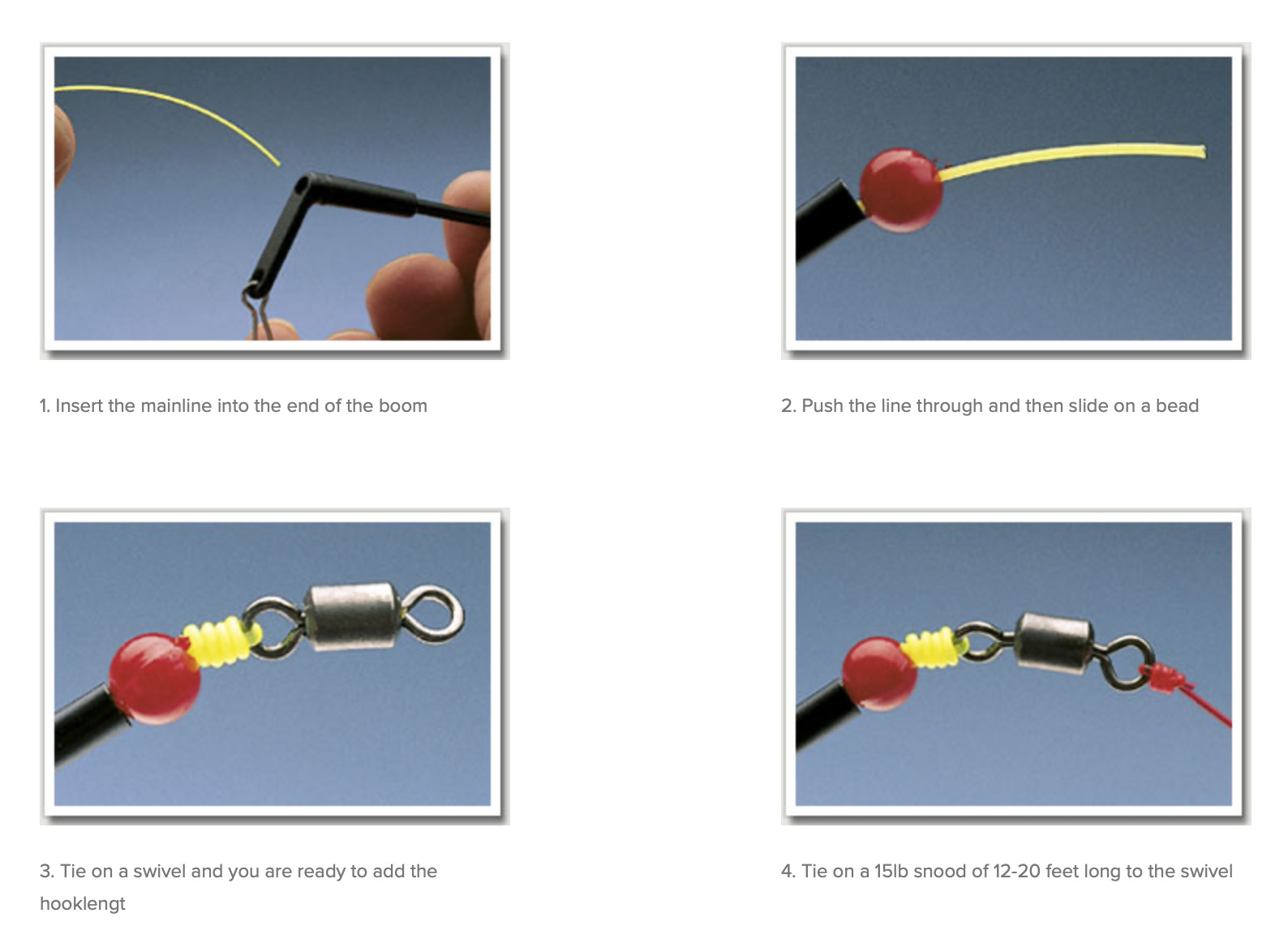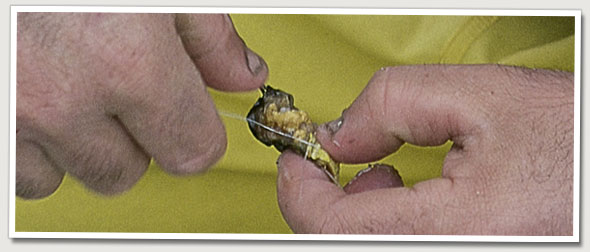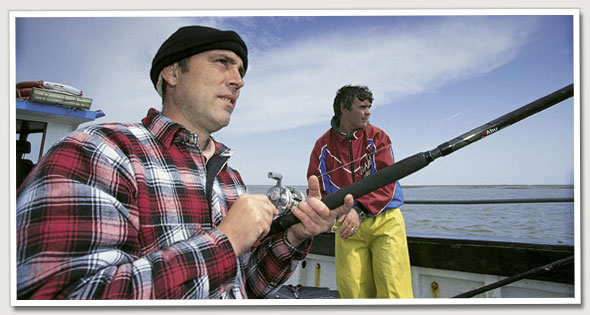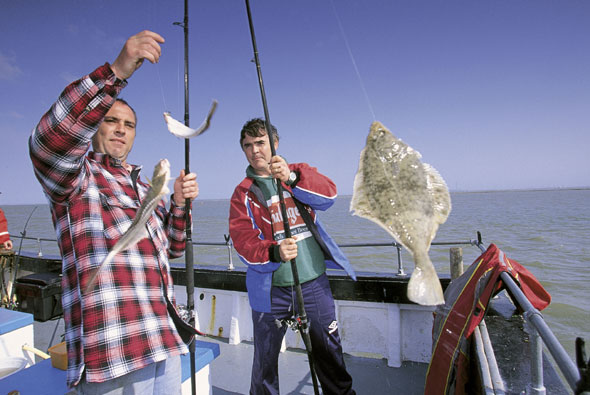What flounder might lack in size they more than compensate for in their sheer eagerness at eating a baited hook and, if you hit things just right, the action can be fast and furious with catches numbering several dozen plump flatties almost common place, says Dave Lewis…
FLOUNDER are rarely associated with charter boat fishing, which is a shame because there are many areas around the country that, apart from offering a viable alternative when foul weather prevents offshore trips, have the potential to give some excellent lighttackle action in sheltered water.
The Thames Estuary and Poole Harbour are fine examples of the sort of places I’m talking about, though there are many others.
Clearly, when talking about a fish that has an average weight below a couple of pounds, light tackle is essential if you are going to get any sporting potential from the fish. One of the big advantages of fishing sheltered inshore venues is that, more often than not, they facilitate the use of the very lightest gear, right down to freshwater float tackle.
TACKLE AND RIGS
In most areas something along the lines of either a carp rod or a medium-weight spinning rod, that will comfortably handle a couple of ounces of lead weight, will be perfect, though a light uptider or 12lb-class boat rod will be fine.
So far as your choice of reel goes, then pick either a small baitcasting multiplier or a fixed-spool loaded with 8-12lb mono line. Some anglers even use centre-pin reels for this sort of work.
End rigs for flounder can be the simple running leger or a paternoster consisting of one, two or three snoods off the main body. I prefer to keep things simple, so prefer a running leger rig consisting of a sliding boom running directly on the mainline, above a bead and small swivel that connects the hooklength made of 15lb mono line.
The ideal length of the hooklength will be determined by fishing conditions or whether you are fishing at anchor or on the drift. As a general rule of thumb you should use a hooklength that is as long as is practical, usually 12-20 feet.
Flounder are responsive to artificial attractors used to advertise the presence of the bait, so most specialists use a wide assortment of spoons and/or coloured beads and sequins. The spoon can be 6-10in above the hook, while the beads are usually placed directly above the hook.
There can be little disputing that the use of such attractors produces more bites, particularly in the coloured water found in most tidal estuaries. The vibration and flash created by a gently wobbling spoon will help draw interested fish towards your bait. So far as the choice of hooks goes, most flatfish anglers choose long-shank Aberdeen hooks for this style of fishing. Sizes range from about a 1/0 down to about a size 4.



BAIT CHOICE
Flounder are caught on any type of bait, but the angler wishing to specialise can reduce the choice to a shortlist of half-a-dozen top baits. Best are the various species on marine worms – bunches of harbour rag, also called maddies, blow and black lug, along with king rag will tempt plenty of fish.
Peeler crabs have a reputation for producing flounder, particularly the bigger specimens, but their effectiveness varies at different venues. Never ignore the various shellfish, notably razorfish, which are perhaps one of the most under-rated and used types of bait of all.

LEARN THE RIGHT METHODS
Depending on location, among other factors, boats can be fished either at anchor or on the drift when you are seeking estuary flounder.
Given the confines and topographical features of most estuaries, such as vast expanses of very shallow water, sandbars and tidal currents, you will invariably be fishing at anchor if fishing from a charter boat. If this is the case, then perhaps one of the most effective ways to produce fish is to cast baits well uptide and away from the boat.
This is exactly the same way as you would when uptiding, though plain rather than grip leads should be used.
The use of a plain lead allows the current to steadily drag the baited terminal rig across the bottom, thus presenting the baits to any hungry fish in a very tempting manner. Ideally you should use lead weights that are light enough for the current to drag them very slowly. With this in mind, be prepared to swap leads as the strength of tide increases and decreases.
The shape of your lead weight you use is important too. Round bombshaped leads are an ideal choice when there is little run of tide, while switching to a flat-sided lead of the same weight will provide more grip and help maintain the ideal speed of drag as the tide increases.
Another option is to present your baited rig downtide in the traditional straight-over-the-back method. This is effective in areas with a strong run of tide and/or fairly deep water.
Downtiding is a good option if you are fishing from a full charter boat. The trick when downtiding is to present the bait in an enticing manner. Be prepared to adjust both the size and shape of your lead weight throughout the tidal cycle. By using a relatively light lead, just heavy enough to maintain bottom contact, and by leaving the reel in free-spool and controlling the flow of line using your finger or thumb, you can trot baits a long way downtide so your rig covers a lot of ground.
If you do not get a bite, you can reengage the spool or close the bale-arm and slowly inch the bait towards the boat. If you do detect a bite, give the fish plenty of time to take the bait before attempting to set the hook. Flounder often hit a bait with aggression and, in the excitement of the moment, it is all too easy to strike too quickly and pull the bait away from the fish. If the fish is given a minute or so to swallow the bait you will usually catch it.

CONSERVATION
Flounder do not make great eating, so it is best to release the fish as soon as possible. Using fine-wire Aberdeen hooks not only aids ideal bait presentation, but assists unhooking. These hooks can usually be bent free and removed, even if the fish has swallowed the bait.
A further tip when intending to release fish is to crush the hook’s barb with a pair of pliers. You will lose few, if any, flounder with a barbless hook.








